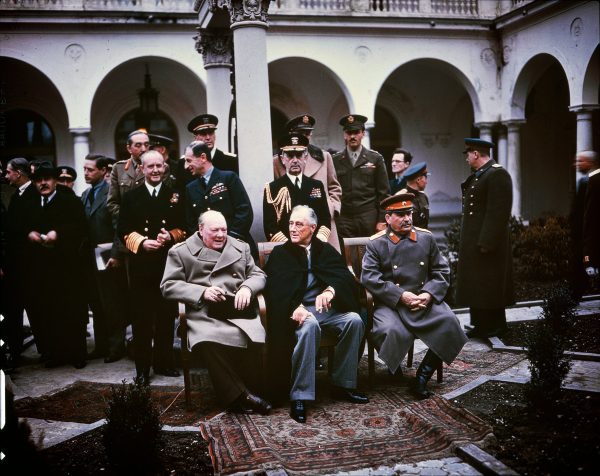Trump 100-day report card: Tariff rollout ‘the biggest unforced error in American economic history’

Trump surprised some when he didn’t impose tariffs on Inauguration Day. Instead, he opted to wait a few weeks while his administration crafted a plan. But now, 100 days into the second Trump presidency, U.S. trade policy has been reworked, and dozens of allies and adversaries alike face steep tariffs. The rollout has gotten poor marks from most economists. The markets have sunk in response to the tariffs, and Trump’s approval among voters has dipped. A flat 10% tariff rate for U.S. trading partners was announced in early April, and much higher tariff rates were implemented for certain other countries. After an overwhelmingly negative response from the markets, Trump backtracked and removed the higher tariff rates for 90 days. Separately, China has been the splashiest target of Trump’s tariffs, sparking fears of an all-out trade war. Rates on Beijing were ratcheted up to a blistering 145%. Trump has also imposed tariffs on Canada and Mexico over fentanyl and border security, and he has also imposed tariffs on steel and aluminum. In an interview with the Washington Examiner, Ryan Young, a senior economist at the Competitive Enterprise Institute, said that Trump’s tariff rollout has been disastrous. “It’s the biggest unforced error in American economic history — I really think it deserves that title,” Young said. He said he would grade the rollout an F- if that were possible. “Part of it is the uncertainty, the chaos of the rollout,” Young added. “It doesn’t seem like it was well planned. He’s going back on things.” But the Trump administration maintains that while the tariffs might cause some short-term pain, they are the needed medicine for the long-term health of the nation. Also, on the campaign trail, Trump hinted that the across-the-board tariffs could go as high as 20%, so while many economists have hammered the 10% multi-country tariffs as bad policy, they could have been even more protectionist. The White House has also emphasized that there are big deals coming as a result of the tariffs. Better trade deals would bring relief to markets, although many economists worry that the economic blowback from the initial tariffs themselves might far outstrip the positives of new deals with different countries. Some have also panned Trump because of his on-again-off-again philosophy toward tariffs, which caused uncertainty to rise and has made the markets turbulent. This week, Trump said he’ll announce new tariff rates for U.S. trading partners in the coming two or three weeks, injecting further uncertainty into the mix. Commerce Secretary Howard Lutnick has said that 90 countries have begun negotiations with the White House over the tariffs and are looking to make deals. “And by the way, if we don’t have a deal with a company or a country, we’re going to set the tariff. We just set the tariff. It’s something that we think that will happen, I’d say, over the next couple of weeks,” Trump told reporters on Wednesday. “Over the next two, three weeks, we’ll be setting the number.” Bill Reinsch, an expert in trade policy with the Center for Strategic and International Studies who served for 15 years as president of the National Foreign Trade Council, emphasized the constantly shifting nature of the levies. “To me, it’s the textbook definition of arbitrary and capricious,” Reinsch told the Washington Examiner. “You know, they’re on, they’re off, they’re up, they’re down, they’re postponed, there won’t be any exemptions, then there will be exemptions.” Reinsch said that the main outcome of all of the changing policies surrounding tariffs is “massive uncertainty.” “So he’ll impose these things and the market tanks, and then they make a change,” Reinsch said. “So I think in the short run, you’re going to find just a lot of people, investors in particular, sitting on their money, waiting for the dust to settle, waiting to see what will happen.” China, one of the world’s biggest manufacturers, has been the top target of Trump’s tariff rollout. But to some relief, Trump has indicated that he expects the high 145% tariffs on China will come down “substantially.” “I think we’re going to live together very happily and ideally work together, so I think it’s going to work out very well,” Trump told reporters this week. Policy uncertainty makes it difficult for corporations to make plans for months and years ahead. Treasury Secretary Scott Bessent has defended Trump’s tariffs as necessary in the long run. In a recent speech, he emphasized the need to fix trade imbalances. He said that, for decades, presidential administrations have relied on “faulty assumptions” that the policies of U.S. trading partners would drive a balanced global economy, even as trade deficits persisted. Trump has said the goal of his aggressive tariffs is to realign trade imbalances and build out manufacturing in the U.S. “Intentional policy choices by other countries have hollowed out America’s manufacturing sector and undermined our critical supply chains, putting our national and economic security at risk,” Bessent said. “President Trump has taken strong action to address these imbalances and the negative impacts they have on Americans.” The stock market has gyrated quite a bit, but, on balance, is lower in large part because of the tariff rollout. The benchmark S&P 500 has fallen 4.7% in the past month and has dropped by 6.2% since the start of 2025. The tech-heavy Nasdaq has declined 5.3% in the past month and more than 10% since the start of the year. Consumer sentiment has also soured in response to the tariffs, and inflation expectations are soaring.The University of Michigan Consumer Sentiment Index for April, released on Friday, found that year-ahead inflation expectations jumped from 5% last month to a concerning 6.5% this month. That is the highest reading since 1981, when the Great Inflation was finally winding down. Consumer sentiment dropped 8.4% over the month, falling for the fourth straight month. Sentiment has fallen more than 32% over the past year. But the tariff rollout hasn’t just affected the economy, markets, and economic sentiment. It has also hurt Trump politically. Trump entered office with positive net approval ratings, with a New York Times aggregation of polling indicating he had 52% approval and 43% disapproval shortly after inauguration. Right before the largest tranche of tariffs was announced, his disapproval rating had climbed to about 50%. But since then, it has ticked up to 52% disapproval and 44% approval. Peter Loge, director of the George Washington University School of Media and Public Affairs, called the tariff rollout a “political failure.” Loge also said that Democrats would get a political boost from the tariff dissatisfaction. “Bad policy news is always good for the opposition party,” he told the Washington Examiner. “Donald Trump benefited from voters’ dissatisfaction when Democrats are in charge, and now Democrats are benefiting from dissatisfaction while Republicans are in charge.” Before Trump, Republicans had long been the party that opposed most tariffs and the party of free-market economics. Advancing American Freedom, a group founded by Vice President Mike Pence, has pushed back on the Trump tariffs. The group recently launched a six-figure ad campaign to rally opposition to tariffs in D.C. Sydney Stubbs, vice president of communications for the group, told the Washington Examiner that Trump had it correct during his first term in office, when he imposed much smaller, targeted tariffs, rather than sweeping universal ones. “Using tariffs as a blunt instrument on friend and foe alike has been a massive policy misstep, one that fuels the Washington swamp and leaves hardworking Americans picking up the tab,” she said. “The Trump Administration can still get the economy back on track, and that starts by removing broad-based tariffs and renewing the conservative policies of tax cuts and deregulation that were such a resounding success in the president’s first term.” Some free-market economists have also feared that Trump’s tariff agenda, which is expected to slow economic output, could end up offsetting or even overshadowing the positive economic effects of extending and expanding his 2017 tax cuts this year. Robert Barro, a Harvard economist known for his work on economic growth and fiscal policy, said such an aggressive tariff policy from the Trump administration has the potential to negate the benefits of extending and expanding the 2017 tax cuts. “I think the tariffs are sufficiently negative, they’ll probably more than outweigh the benefits from the tax cuts,” Barro, a self-described libertarian, told the Washington Examiner. TRUMP TEASES ‘200 DEALS’ COMING AS TRADE NEGOTIATIONS CONTINUE An average of economists and other experts the Washington Examiner has spoken with over the past few weeks would likely give Trump a D on the tariff rollout. While markets are spooked and the odds of an economy-roiling recession have increased, the administration has hinted that some major trade deals might come from the rollout, a factor that boosts the rating.



















